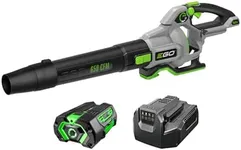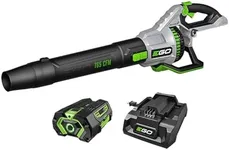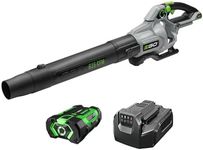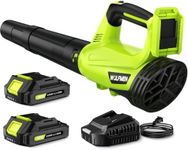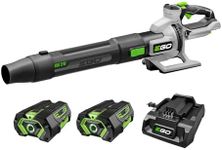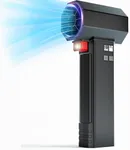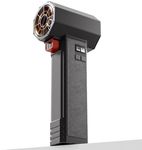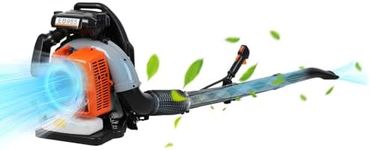Buying Guide for the Best Most Powerful Cordless Leaf Blower
Choosing the most powerful cordless leaf blower involves understanding various specifications that determine its performance and suitability for your needs. Cordless leaf blowers offer the convenience of mobility without the hassle of cords, making them ideal for large yards or areas without easy access to power outlets. To make an informed decision, you need to consider several key specifications that impact the blower's power, battery life, and overall usability.Air Volume (CFM)Air Volume, measured in Cubic Feet per Minute (CFM), indicates the amount of air the blower can move. This spec is crucial because it determines how effectively the blower can move leaves and debris. Higher CFM values mean more air is being pushed out, which is ideal for clearing large areas quickly. For small yards or light-duty tasks, a CFM of 200-400 may suffice. For medium to large yards or heavier debris, look for a CFM of 400-600. For the most demanding tasks, such as wet leaves or large properties, a CFM above 600 is recommended. Choose a CFM based on the size of your yard and the type of debris you typically encounter.
Air Speed (MPH)Air Speed, measured in Miles Per Hour (MPH), indicates how fast the air is moving out of the blower. This spec is important because it affects the blower's ability to lift and move heavier debris. Higher MPH values mean the air is moving faster, which is useful for dislodging stuck or wet leaves. For light-duty tasks, an air speed of 90-120 MPH may be sufficient. For more challenging tasks, such as wet leaves or heavier debris, look for an air speed of 120-180 MPH. For the toughest jobs, an air speed above 180 MPH is ideal. Consider the type of debris and the conditions in your yard when choosing the appropriate air speed.
Battery VoltageBattery Voltage indicates the power output of the blower's battery. Higher voltage generally means more power and longer run times. This spec is important because it affects both the performance and the duration you can use the blower before needing to recharge. For light-duty tasks, a battery voltage of 20-40V may be adequate. For medium to heavy-duty tasks, look for a battery voltage of 40-60V. For the most demanding tasks, such as large properties or extended use, a battery voltage above 60V is recommended. Choose a battery voltage based on the size of your yard and the intensity of the tasks you need to perform.
Battery LifeBattery Life indicates how long the blower can operate on a single charge. This spec is crucial for ensuring you can complete your tasks without frequent interruptions for recharging. Battery life can vary based on the blower's power settings and the type of battery used. For small yards or quick tasks, a battery life of 20-30 minutes may be sufficient. For medium to large yards or more extended tasks, look for a battery life of 30-60 minutes. For the most demanding tasks or large properties, a battery life of over 60 minutes is ideal. Consider the size of your yard and the duration of your typical tasks when choosing the appropriate battery life.
WeightWeight is an important spec because it affects the ease of use and comfort while operating the blower. Lighter blowers are easier to handle and maneuver, especially for extended periods. For light-duty tasks or smaller yards, a blower weighing 5-7 pounds may be sufficient. For medium to heavy-duty tasks, look for a blower weighing 7-10 pounds. For the most demanding tasks, a blower weighing over 10 pounds may be necessary, but ensure it has ergonomic features to reduce fatigue. Choose a weight that you can comfortably handle based on the duration and intensity of your tasks.
Noise LevelNoise Level, measured in decibels (dB), indicates how loud the blower is during operation. This spec is important for ensuring you do not disturb neighbors or violate local noise ordinances. Lower noise levels are generally more comfortable for the user and those nearby. For light-duty tasks or residential areas, a noise level of 60-70 dB may be sufficient. For more powerful blowers, look for a noise level of 70-80 dB. For the most powerful blowers, a noise level above 80 dB may be necessary, but consider using hearing protection. Choose a noise level that balances power and comfort based on your environment and personal preference.
